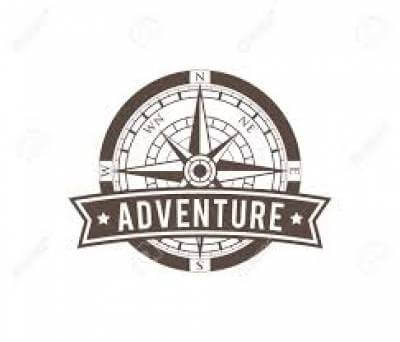MERA PEAK CLIMBING 8 DAYS
At an elevation of 6476 meters, Mera is one of the best known trekking peaks in Nepal, looming in the area to the south of Everest, rising to the south of Everest. From the summit on a clear day, trekkers can also see an unmatched panorama of Everest, Lhotse, Makalu, Cho Oyu, and Kangchenjunga. The Overview This fast & light 8-day Mera Peak ascent is a perfect option if you’re looking for a short, direct, and seriously stunning route to the top – clothes staying nice and clean isn’t an option when there’s snow and altitude to contend with.
The adventure starts with a rewarding flight from Kathmandu to Lukla and then a sensational helicopter flight seeing flight to the isolated Hinku Valley, arriving in Kothe village. This helicopter flight not only saves precious time, but also the grueling hike, providing climbers with more chances to get acclimated to the elevation and concentrate on the ascent. The path evolves slowly by veering off into thick forests and onto rough, glacial terrain, providing impressive views that make the journey feel like an honest-to-goodness adventure.
On the upper slopes, you reach places like Thangnak and Khare, where the process of adjusting to the altitude can be completed, and you find that downtime that can be so precious for preparing the mind for the final push to the top. Recovery days are important not only for physical recovery, but mental preparation. Acclimated, the final push comes up from Mera High Camp, where climbers sleep out under the stars in tents to be ready for an early morning ascent.
The summit of Mera Peak is an unforgettable experience. From the summit is one of the most impressive views in the world: you can see five of the world’s highest peaks, Everest, Lhotse, Makalu, Cho Oyu, and Kangchenjunga. It is a high-alpine success and quiet, snow-filled world, a frozen moment permanently captured in the psyche of those who achieve it.
From the summit, you return to Khare or Kothe, then catch the helicopter to Lukla. A brief flight from Lukla gets you back to Kathmandu and concludes an amazing journey. The Mera Peak 8-day Short Climbing is a unique chance for climbers wishing to stand on a Himalayan summit and experience the exhilaration of trekking in the wilderness at an extremely high altitude within a very short period.
With professional guidance, breathtaking landscapes, and challenging climbing in the Alps, this superb Himalayan journey is the perfect escape for those who want to conquer Mera Peak.
ITINERARY
Day 1 : Fly from Kathmandu to Lukla (2,800m) & Helicopter to Kothe (3,580m) – Duration: Approx. 2 Hours.
The adventure begins with an early flight from Kathmandu to Lukla, known for its thrilling airport and dramatic landing amidst the mountains. After landing in Lukla, you'll take a scenic helicopter ride to Kothe, situated at 3,580 meters in the remote Hinku Valley. This helicopter ride cuts down on the trekking time and allows more time for acclimatization. Upon arrival in Kothe, you'll settle into the local lodge or camp for the night, ready to begin your trek the next day.
Day 2 : Trek from Kothe to Thangnak (4,350m) – Duration: 4–5 Hours.
Today marks the start of your trek through the Hinku Valley. You will hike from Kothe to Thangnak, located at 4,350 meters. The trail ascends gradually, passing through alpine forests and beautiful landscapes. The walk is about 4-5 hours, offering breathtaking views of the valley and surrounding mountains. Upon reaching Thangnak, you'll enjoy the serene atmosphere and prepare for the next leg of your journey. This village provides a perfect spot to adjust to the altitude.
Day 3 : Acclimatization Day at Thangnak.
To ensure a safe climb, you'll take an acclimatization day at Thangnak. Acclimatization is crucial when trekking at high altitudes to prevent altitude sickness. This rest day allows your body to adjust to the reduced oxygen levels. During the day, you can take short hikes around Thangnak to help with the acclimatization process. You’ll also enjoy the opportunity to relax, take in the stunning scenery, and mentally prepare for the more challenging sections of the trek.
Day 4 : Trek from Thangnak to Khare (5,045m) – Duration: 3 Hours.
Today, you will trek from Thangnak to Khare, which is situated at an altitude of 5,045 meters. The trek takes about 3 hours and is relatively short, giving you plenty of time to acclimatize. As you ascend, you’ll pass through alpine meadows and rocky terrain, with impressive views of the surrounding peaks. Upon arrival in Khare, a small settlement, you’ll be surrounded by towering mountains, providing a perfect base for your summit bid. You'll rest here for the night, preparing for the upcoming climb to Mera High Camp.
Day 5 : Acclimatization Day at Khare.
Another important acclimatization day is planned at Khare to give your body further time to adjust to the altitude. The high-altitude environment can be taxing, and proper rest is essential to prevent altitude sickness. You can explore the nearby areas on short walks or hikes. Your guides will also assist you in preparing mentally and physically for the next phase of the climb, while continuing to monitor your health and well-being at the higher altitude.
Day 6 : Trek to Mera High Camp (5,700m) – Duration: 4–6 Hours.
Today, the trek becomes more challenging as you ascend to Mera High Camp, located at an altitude of 5,700 meters. The trail takes you through glaciers, moraines, and rocky paths, offering stunning views of the surrounding peaks. This section of the trek usually takes about 4-6 hours, with the altitude making the climb progressively more difficult. Upon reaching Mera High Camp, you’ll be staying in tents under the stars, preparing for your final summit attempt. This camp offers amazing views of Mera Peak and other nearby mountains.
Day 7 : Summit Mera Peak (6,476m) & Return to Khare – Duration: 8–9 Hours.
Today is the pinnacle of your trek as you attempt to summit Mera Peak at 6,476 meters. The climb starts early, usually in the early morning hours, to take advantage of the best weather conditions. The summit push is challenging and involves navigating through snow and ice-covered slopes. With crampons and ice axes in hand, you’ll make your way to the top. Upon reaching the summit, you’ll be rewarded with panoramic views of five of the world’s highest peaks, including Everest, Lhotse, Makalu, Cho Oyu, and Kangchenjunga. After celebrating your achievement, you will descend back to Khare, where you’ll rest for the night.
Day 8 : Trek to Kothe, Helicopter to Lukla & Flight to Kathmandu – Duration: 6–7 Hours.
On the final day of your adventure, you will descend back to Kothe, retracing your steps from the previous days. After arriving at Kothe, you'll take a helicopter back to Lukla, enjoying one last aerial view of the mountains and valleys. From Lukla, you’ll take a scenic flight back to Kathmandu, where you can reflect on your incredible journey and celebrate your successful climb of Mera Peak.
SERVICES
Costs Included in Your Package
- Domestic Airport Pick-Up and Drop-Off: Private car or jeep transfer from/to the airport for your convenience and comfort.
- Meals During the Trek: Three nutritious meals per day (breakfast, lunch, and dinner), including fresh fruit served each evening after dinner.
- Scenic Helicopter Transfer: Shared helicopter flight from Lukla to Kothe -Lukla, offering a spectacular aerial view of the Himalayas.
- Accommodation: Comfortable trekking lodge (tea house) stays during the trek, and tented camp accommodation during the Mera Peak climbing session.
- Permits and Entry Fees: All necessary paperwork, including the Makalu National Park Entry Permit fees.
- Flights and Transfers: Round-trip domestic flights (Kathmandu–Lukla–Kathmandu via Ramechhap) with private airport transfers and applicable airport taxes.
- Experienced Trekking and Climbing Guide: An English-speaking, government-licensed guide who is friendly, knowledgeable, well-trained, and fully insured—covering all his expenses, including salary, food, accommodation, transport, and insurance.
- Mera Peak Climbing Permit: Official permit for climbing Mera Peak.
- Sherpa Porters: Reliable, helpful Sherpa porters (one for every two trekkers) equipped with proper safety and walking gear. Their salary, meals, accommodation, and insurance are covered.
- Medical Support: A Comprehensive first aid kit is available throughout the trek for your safety and peace of mind.
- Emergency Helicopter Arrangement: Coordination of emergency helicopter evacuation (covered by your personal travel insurance, if required).
- Essential Trekking Gear (On Loan): Complimentary use of sleeping bag, down jacket, duffel bag, and walking poles (to be returned after the trek).
- Exclusive Souvenirs: Sherpa Expedition & Trekking T-shirt and a trip achievement certificate upon successful trip completion.
- Health Monitoring: Daily use of an oxygen meter to monitor your pulse, oxygen saturation, and heart rate—crucial for detecting early signs of Altitude Mountain Sickness (AMS).
- Assistant Guide: An additional assistant guide will be provided for groups of 8 or more trekkers to ensure safety and personalized attention.
- Government Fees and Taxes: All government taxes and official expenses are included.
Costs Excluded from Your Package
- Meals in Kathmandu: Lunch and dinner while staying in Kathmandu are not included.
- Hotel Accommodation in Kathmandu: Accommodation in Kathmandu before or after the trek is not covered.
- Nepal Entry Visa: The Nepal visa fee is not included. Visas are available on arrival at Tribhuvan International Airport:
- $30 USD for 15 days
- $50 USD for 30 days
- $125 USD for 90 days
- Travel & Medical Insurance: Personal travel and medical insurance (mandatory for trekking and climbing).
- International Airfare: Flights to and from Nepal are not included.
- Personal Expenses: Any personal spending such as souvenirs, laundry, and snacks.
- Drinks & Snacks During the Trek: Alcoholic and non-alcoholic beverages (including tea, coffee, soup, hot chocolate, cocoa, bottled water), as well as any extra food items purchased along the way or at tea houses (e.g., additional meals, snacks, desserts like chocolate, cake, pudding, etc.).
- Extras at Tea Houses: Charges for hot showers, Wi-Fi, and battery charging at trekking lodges are not included.
- Tips: Gratuities for guides, porters, and drivers (tipping is customary and appreciated).
- Excess Baggage Fees: Extra baggage over 10 kg on the Lukla flight may incur additional fees.
- Early Return from Trek: In case of an early return due to illness or any unforeseen reason, the cost of unused services (flights, accommodations, meals, etc.) is non-refundable. Any additional expenses in Kathmandu (hotel, meals, etc.) will be your responsibility.
EQUIPMENTS
You’ll carry your personal gear and share some group equipment, so pack light with layered, weather-appropriate clothing—avoid cotton and choose breathable, insulating fabrics. A windproof duffle (provided and carried by porters) and water are included. Non-trekking items can be stored in Kathmandu. Sherpa Expedition & Trekking supplies all essential expedition gear.
Upper Body:
- Base Layers: Moisture-wicking and quick-drying shirts and thermal tops.
- Insulation Layers: Fleece or down jackets to provide warmth.
- Waterproof Shell Jacket: A durable and breathable jacket to protect against wind and rain.
- Softshell Jacket: A lightweight and water-resistant jacket for added protection.
- Climbing Harness: A comfortable harness to secure yourself to the rope.
- Helmet: A strong and well-fitting helmet to protect your head from falling objects.
- Gloves: A combination of lightweight liner gloves and insulated gloves or mittens for warmth and dexterity.
- Buff or Neck Gaiter: To protect your neck and face from cold and wind.
- Sunglasses: Polarized and UV-protected sunglasses to shield your eyes from the sun and snow glare.
- Goggles: Ski or mountaineering goggles for added eye protection in extreme weather conditions.
Lower Body:
- Base Layers: Moisture-wicking and quick-drying thermal bottoms.
- Insulation Layers: Fleece or insulated pants for added warmth.
- Waterproof Shell Pants: Durable and breathable pants to protect against wind, rain, and snow.
- Softshell Pants: Lightweight and water-resistant pants for added protection.
- Mountaineering Boots: Sturdy and insulated boots designed for snow and ice.
- Crampons: Attachable spikes that provide traction on icy terrain.
- Gaiters: Waterproof and breathable gaiters to keep snow out of your boots.
- Socks: A combination of moisture-wicking liner socks and thick, warm mountaineering socks.
Other Essential Items:
- Backpack: A spacious and sturdy backpack to carry your climbing gear and personal belongings.
- Sleeping Bag: A warm and lightweight sleeping bag that can withstand sub-zero temperatures.
- Trekking Poles: Adjustable trekking poles for added stability and support.
- Headlamp: Essential for climbing in low-light or dark conditions.
- Water Bottles: Insulated water bottles to keep your water from freezing.
- Sunscreen: High SPF sunscreen to protect your skin from the strong sun at high altitudes.
- First Aid Kit: A comprehensive first aid kit with essential medications and supplies.
- Climbing Snacks: Energy bars, nuts, and other lightweight snacks for quick fuel during the climb.
It is important to invest in high-quality gear and ensure that everything fits properly and is in good condition. Additionally, consult with experienced climbers or a professional guide to ensure you have all the necessary gear and receive proper training on how to use it effectively and safely.
Note: Essential climbing equipment, including an ice axe, crampons, climbing boots, harness, helmet, safety rope, ascender (jumar), and carabiner, can be hired in Khare. The total cost is approximately USD 120 per person for a complete set.
GOOD TO KNOW
Good to Know Before You Go on Mera Peak Climb
Embarking on the Mera Peak Climb is an exciting and challenging adventure that requires careful preparation. Understanding what to expect and what to bring will help ensure a smooth and successful journey. Here’s everything you need to know before taking on this remarkable Himalayan trek.
Best Time to Climb Mera Peak
The ideal months for climbing Mera Peak are from October to November and March to May. During these months, the weather is generally stable, with clear skies and mild temperatures, making for the best trekking and climbing conditions. Winter months can bring heavy snowfall and extreme cold, while summer months might be affected by monsoon rains, making them less ideal.
Fitness and Experience Requirements
While Mera Peak is considered a trekking peak, it still requires good physical fitness and prior trekking experience at high altitudes. Climbers should be comfortable with multi-day trekking in rugged terrain and should ideally have prior experience with trekking in the Himalayas. Experience with basic mountaineering techniques, such as using crampons and ice axes, is also recommended.
Acclimatization and Altitude Sickness
Given that Mera Peak reaches an altitude of 6,476 meters, proper acclimatization is crucial. The itinerary includes planned rest days to help climbers adjust to the high altitude. Symptoms of altitude sickness can occur at higher elevations, and it’s essential to listen to your body. If you feel unwell, always inform your guide immediately.
Drinking plenty of water, eating well, and taking it slow will help minimize the risks associated with altitude sickness. Your guides are trained to manage altitude-related issues and will adjust the pace of the climb accordingly.
Weather and Clothing
The weather on Mera Peak can be unpredictable, with temperatures varying significantly. Daytime temperatures may be mild, but nighttime temperatures can drop drastically, often reaching well below freezing. Ensure you pack suitable layered clothing to regulate your body temperature. Key items to include are:
Insulated jacket (down or synthetic)
Base layers (moisture-wicking)
Windproof and waterproof outer layers
Gloves, hat, and warm socks
Sunglasses and sunscreen for protection against UV rays at high altitudes.
Permits and Regulations
To trek in the region and climb Mera Peak, you’ll need several permits, including the Sagarmatha National Park Permit and the Mera Peak Climbing Permit. These permits are arranged by your trekking agency, but it’s important to check that all necessary documentation is in order before you leave. Permits can take time to process, so make sure to allow enough time for them to be arranged.
What to Bring for the Climb
When preparing for the Mera Peak Climb, packing the right gear is essential for both comfort and safety. Here’s a list of recommended items:
Backpack: Comfortable, with a rain cover
Sleeping bag: Rated for cold temperatures (down to -20°C)
Trekking poles: To assist with stability on uneven terrain
Climbing gear: Crampons, ice axe (usually provided by your agency)
Headlamp: With extra batteries
First aid kit: Including altitude sickness medication, blister care, etc.
Snacks and energy food: For extra energy during long days of trekking.
Altitude and Safety Considerations
Mera Peak is not a technical mountain, but due to its high altitude, there are inherent risks involved. It is important to maintain a steady pace and allow for adequate rest to prevent overexertion. Always follow your guide’s instructions and use safety equipment like harnesses, ropes, and crampons, especially during the summit attempt. Your guides are experienced mountaineers, and their advice should be followed at all times for your safety.
What’s Included in the Trip
A typical Mera Peak climbing package includes:
Flights: Round-trip Kathmandu to Lukla, and helicopter rides to and from Kothe (saving you time and energy).
Accommodation: Teahouse stays along the trek, and tents at higher altitudes.
Meals: All meals during the trek are provided, from breakfast to dinner, and usually include a mix of Nepali and international dishes.
Guides and Porters: Expert local guides and porters to help with the trek and carry your heavy gear.
Responsible Trekking and Environmental Considerations
Nepal’s mountains are an important natural resource, and it’s essential to trek responsibly to protect the environment. Always follow the Leave No Trace principles, avoid littering, and respect the local cultures and traditions. If possible, support eco-friendly lodges and practices during your stay. Additionally, consider bringing a water purification system to minimize plastic bottle waste.
Travel Insurance and Emergency Support
Having travel insurance that covers trekking and high-altitude mountaineering is strongly recommended. It’s important to ensure that your insurance covers medical evacuation, as emergencies can happen, especially at high altitudes. Your trekking agency will provide safety protocols and emergency evacuation plans, including helicopter rescue if necessary.
MAP
PHOTOS/Videos
Departures
Select a departure month
Fill out the form below and a Travel Expert will reach out to create your perfect tour.
FAQS
What is Mera Peak, and why is it popular for trekking?
Mera Peak is the highest trekking peak in Nepal, standing at 6,476 meters. It is popular due to its relatively non-technical climb, stunning views of the surrounding Himalayan peaks, and the opportunity to experience high-altitude trekking without the complexities of a full mountaineering expedition.
How difficult is the Mera Peak climb?
Mera Peak is considered a challenging trekking peak, but it is accessible to those with strong fitness levels and prior trekking experience. It requires basic mountaineering skills like using crampons and an ice axe, especially during the summit push. Acclimatization and a steady pace are key to a successful ascent.
Do I need technical mountaineering skills to summit Mera Peak?
While Mera Peak is classified as a trekking peak, it does require basic mountaineering skills. Climbers need to be familiar with using crampons, an ice axe, and navigating snow and ice conditions. If you're new to mountaineering, it's recommended to take a training course beforehand.
What is the best time to climb Mera Peak?
The best time to climb Mera Peak is during the spring (March to May) and autumn (October to November) seasons. These months offer stable weather conditions, clear skies, and moderate temperatures, making the climb more manageable and enjoyable.
What permits do I need for the Mera Peak climb?
To climb Mera Peak, you'll need the Sagarmatha National Park Permit and the Mera Peak Climbing Permit. These are arranged by your trekking agency, but it's essential to check that everything is in order before you leave for Nepal.
How long does the Mera Peak trek take?
The typical Mera Peak climb takes 8 days, including acclimatization days and the summit attempt. This is a compact and efficient itinerary that allows you to experience high-altitude trekking without the need for an extended time commitment.
How high is Mera Peak, and what can I see from the summit?
Mera Peak stands at 6,476 meters (21,247 feet). From the summit, climbers are rewarded with stunning panoramic views of five of the world’s six tallest peaks: Mount Everest, Lhotse, Makalu, Cho Oyu, and Kangchenjunga. The views are breathtaking and one of the main reasons people trek to the summit.
Do I need travel insurance for the Mera Peak trek?
Yes, it is highly recommended to have travel insurance that covers high-altitude trekking and mountaineering. Your insurance should also include emergency evacuation in case of an accident or health issue, which can be necessary at high altitudes.
What should I pack for the Mera Peak climb?
Packing for Mera Peak requires gear suited for both trekking and mountaineering. Essential items include:
Warm layers (insulated jacket, thermals)
Waterproof and windproof outer layers
Trekking boots, crampons, and an ice axe
Sleeping bag rated for cold temperatures
Trekking poles, headlamp, and sunglasses
Personal first aid kit and high-altitude medications
Water purification system
Is it safe to climb Mera Peak?
Climbing Mera Peak is generally safe if you follow the proper acclimatization schedule and listen to your guide's instructions. With expert guidance, proper preparation, and the support of experienced guides and porters, the risk of altitude sickness and other accidents is minimized. However, like any high-altitude trek, there are inherent risks, so it's important to be well-prepared and aware of your body’s limits.
Latest Traveller’s Reviews
Travel experiences of our clients who recently returned from their trips.
100%
Based On 840 Reviews
Zbigniew Połoniewicz
Australia
September 17, 2024
A Life-Changing Adventure
My Chulu Far East Peak climbing experience with Sherpa Expedition was life-changing. The guides were exceptional—supportive, knowledgeable, and always there to help. They made sure we were well-prepared and safe during the trek. The stunning views and the thrill of reaching the summit were beyond words. I appreciated the attention to detail in logistics, meals, and accommodations, which contributed to a seamless experience. I left with amazing memories and new friends. I highly recommend Sherpa Expedition for an incredible climbing adventure!
George Bricks
Canada
September 17, 2024
Challenging Yet Rewarding Adventure
The Pisang Peak trek with Sherpa Expedition was a challenging yet rewarding adventure. Our guides were exceptional, providing constant support and motivation. They made sure we were well-acclimatized and prepared for the climb. The scenery was stunning, especially as we approached the summit, where the panoramic views took my breath away. I appreciated the attention to detail in logistics, from meals to accommodations. This trek was an unforgettable experience, and I highly recommend Sherpa Expedition for anyone ready to tackle Pisang Peak!
Ngagne Diambang
Hong Kong
September 16, 2024
Outstanding Service!
I can’t thank Sherpa Expedition & Trekking enough for the incredible service during my Everest Base Camp and Island Peak climb. Every detail was meticulously planned, and the guides were attentive to our needs. They provided great insights into the climbing techniques necessary for Island Peak. The scenery was beyond words, and each day was a new adventure. The encouragement from the team helped us reach the summit, and the celebration afterward was a highlight! I highly recommend this expedition for anyone ready for a challenge.
People Considering This Package Right Now Check availability


























